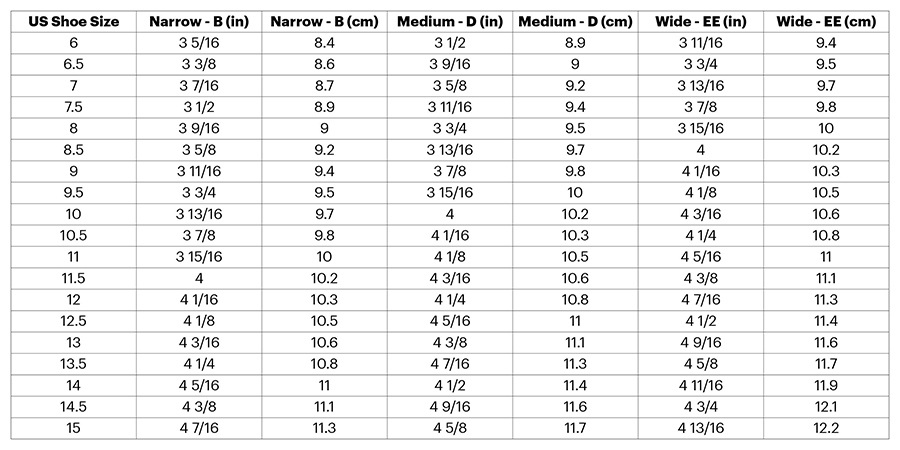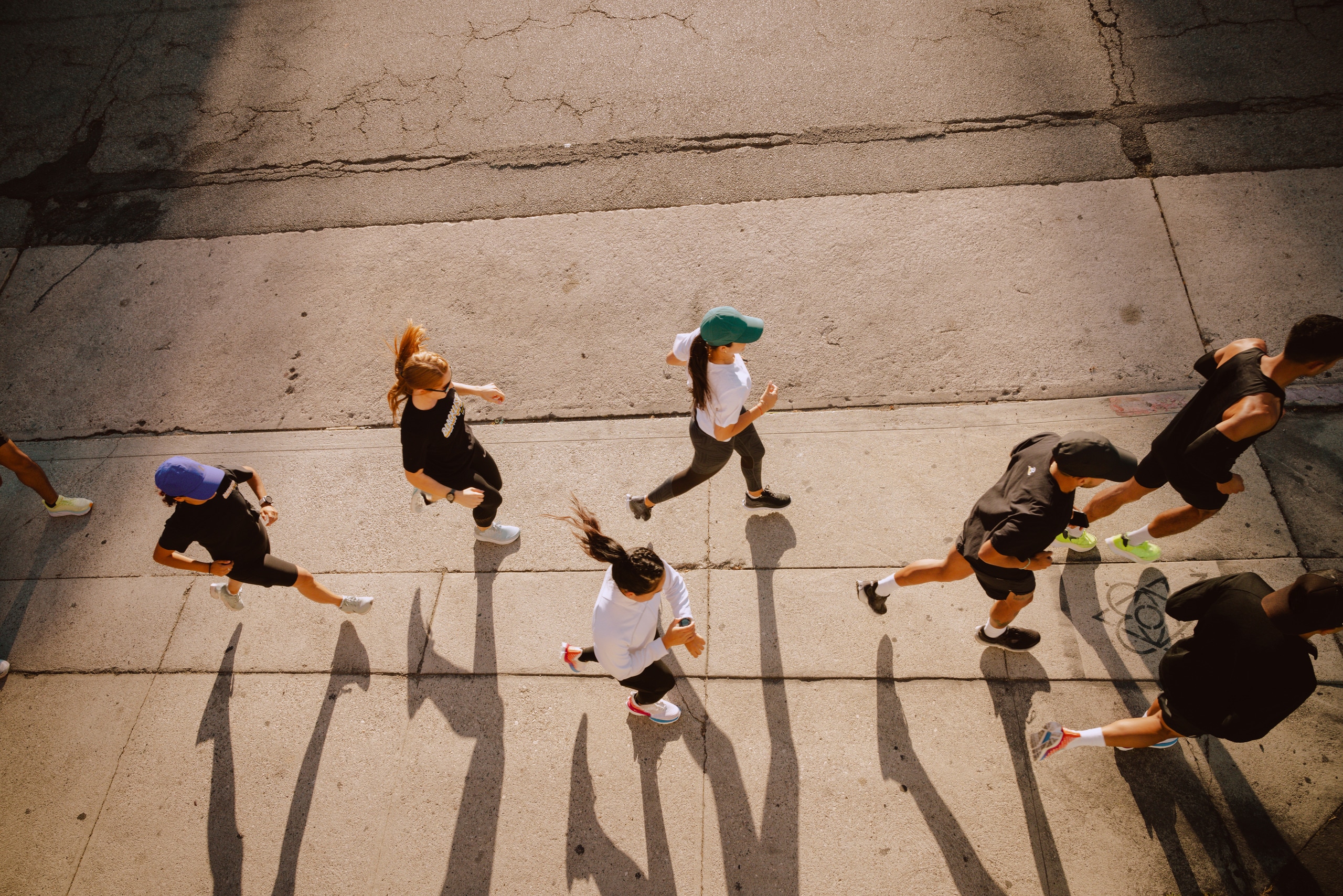Whether you're running for fun or training for a marathon, the right running shoes provide the proper foundation for your entire body, can help prevent injuries and make it far more enjoyable to log those miles. Ultimately, the right pair will fit well from the start and complement your running style.
Here are the key decision points to help you find a shoe that fits and feels good:
- Consider where you're planning to run. Do you mostly hit the road? Or do you hit the trails and gravel paths? Your choices are road-running, trail-running or cross-training shoes.
- Decide if you want more or less cushioning underfoot. Do you want to feel like you're running on a cloud with maximum cushion or to feel the ground underfoot? Cushioning—the thickness of material under the midsole and the firmness of the foam—and heel drop are two factors to consider in the construction of a running shoe.
- Understand whether you need a specific type of support for your gait. Most runners will be able to choose a neutral shoe, but if your foot tends to roll to the far outside or inside, there are shoes that can help you.
- Make sure the shoe fits. Your shoe should fit well from the start with no breaking-in period.
How long should running shoes last? In general, a pair of running shoes should last between 400 to 500 miles of running (3 or 4 months for regular runners). Take a look at your shoes and check if the midsoles and outsoles are compressed or worn. If they are, it may be time for a new pair.
Further reading: When to Replace Your Running Shoes
Video: How to Buy Running Shoes Online
Video: How to Choose Road-Running Shoes
Where Do You Plan to Run?
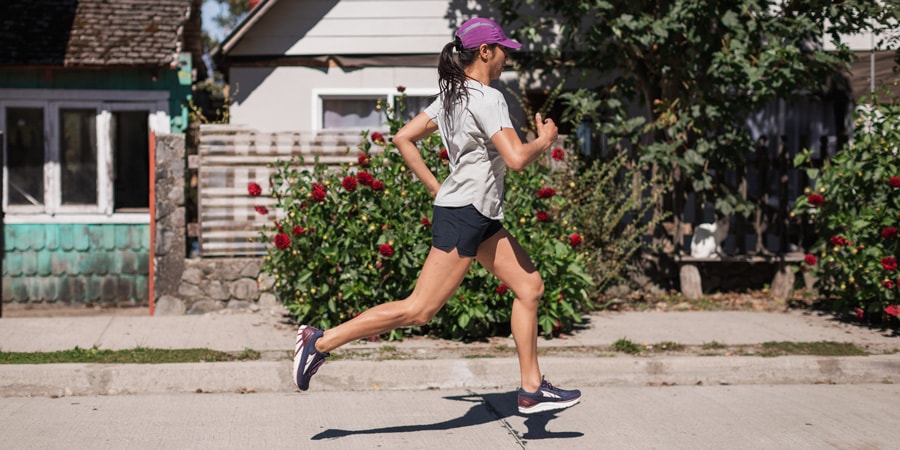
Road-running shoes are designed for pavement and occasional forays onto packed surfaces with slight irregularities.
- Light and flexible, they're made to cushion or stabilize feet during repetitive strides on hard, even surfaces.
- Best for people who run on sidewalks, road, treadmills or track.
- Road-running shoes have flatter, smoother soles to create a consistent surface for running on paved roads.
Shop road-running shoes on REI.com
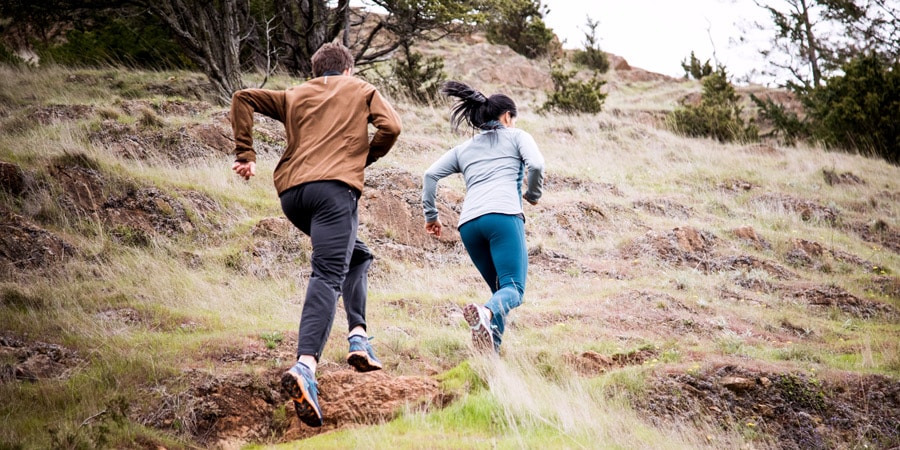
Trail-running shoes are designed for off-road routes with rocks, mud, roots or other obstacles.
- They have bigger lugs (the "cleats" on the outsole) than road-running shoes for better grip on uneven terrain.
- They are sometimes fortified with plates underfoot to help protect your feet from rocks or sharp objects.
- They're generally stiffer through the midsoles for more support on rugged trails and uneven surfaces.
Shop trail-running shoes on REI.com
Cross-training shoes are designed for gym workouts, cross-training or any balance activity where having more contact with the ground is preferred over a thick platform sole.
Shop cross-training shoes on REI.com
How Much Cushion Do You Want to Feel?
The "ride" provided by your shoes is determined by two aspects of cushioning: the firmness of the foam and the thickness (also called the stack height) of the shoe material between your feet and the ground. This material in the midsole is usually a type of foam, typically EVA or polyurethane, that helps absorb the impacts as your feet strike the ground. From maximally cushioned midsoles to ones with no cushion, how thick or firm the midsoles below your feet is a matter of personal preference. Some runners want a plush, soft ride for extra comfort. Others don't want or need that much cushioning, preferring more response from each stride. The best way to decide is to try on a variety of shoes and see how they feel.
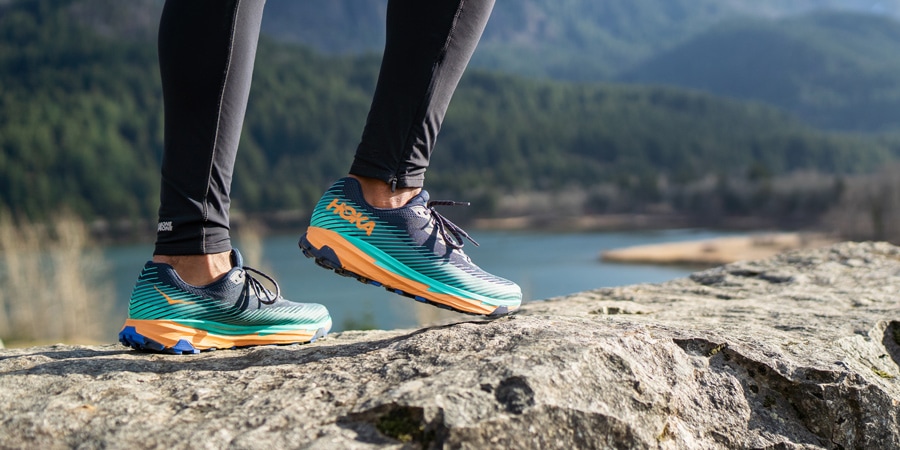
Here are your choices when it comes to cushioning:
- Maximum cushion: These maximalist shoes offer thick padding in the midsoles for the ultimate plush feel. Runners may prefer the comfort of thicker, softer foam underfoot when running long distances or multiday races. But super-soft cushioning isn't for everyone. Some don't like the squishiness feel.Further reading: What You Need to Know About Maximalist Running ShoesShop maximum cushion running shoes on REI.com
- Moderate cushion: Shoes with moderate cushion strike a balance between pillow-soft comfort and thin or no cushion. You'll likely find a variety of shoes in this category.Shop moderate cushion running shoes on REI.com
- Minimal cushion: Shoes with minimal amounts of cushioning at the midsoles are favored by runners who want to feel their connection to the ground beneath them. Runners who swear by minimalist shoes say they closely mimic a more natural gait while running.Shop minimal cushion running shoes on REI.com
- Barefoot shoes: The term barefoot refers to shoes that offer the closest feel to being barefoot. Many have no cushion in the heel pad and a very thin layer—as little as 3-4mm—of shoe between foot and ground and provide no arch support or stability features.Further reading: Minimalist/Barefoot Running Basics Shop barefoot running shoes on REI.com
Understanding Drop
The heel drop of a shoe represents the difference in cushioning between the heel and toe of the shoe, measured in millimeters. The drop primarily affects how your foot strikes the ground.

A traditional running shoe usually has a heel drop of about 10mm and up. It offers lots of cushion in the heel and promotes landing first on the heel as the foot moves through its motion. By contrast, a zero-drop shoe means there's an equal amount of cushioning under the heels and toes. The lower the drop, the more a shoe will help promote a midfoot strike—considered by many to have a lower impact stride than a heel strike. Keep in mind that the lower the drop, the more your Achilles tendon will have to work. For those used to a traditional shoe, any lower-drop shoe (in the range of 0mm up to about 8mm) may require an adjustment period.
Heel drop and the total amount of cushioning are independent of each other; it is possible to find ultra-cushioned shoes that still have a zero or low drop.
How Much Support Do You Need?
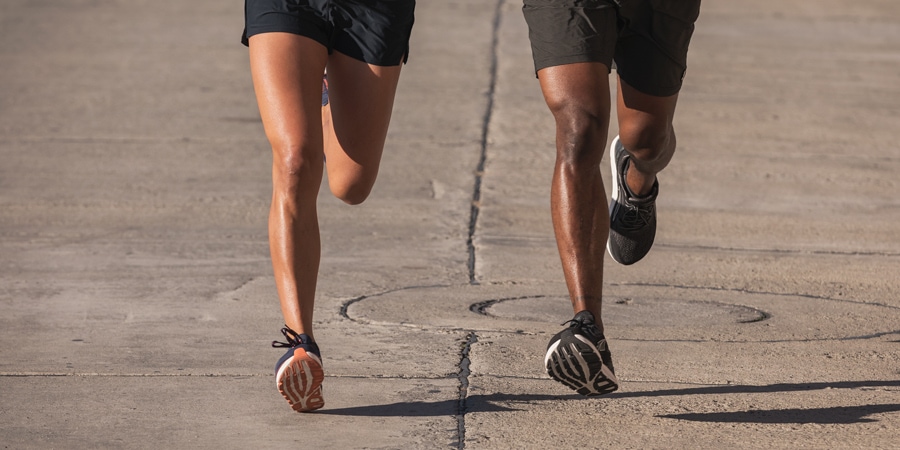
How does your foot hit the ground when you run? Pronation is the natural way your foot rolls inward when it strikes the ground and then propels forward. There are three different types of pronation, and you may want shoes with features that support your pronation level. Brands use different footwear technologies and features that reduce excess movement. The technologies are meant to guide the foot through a smoother transition.
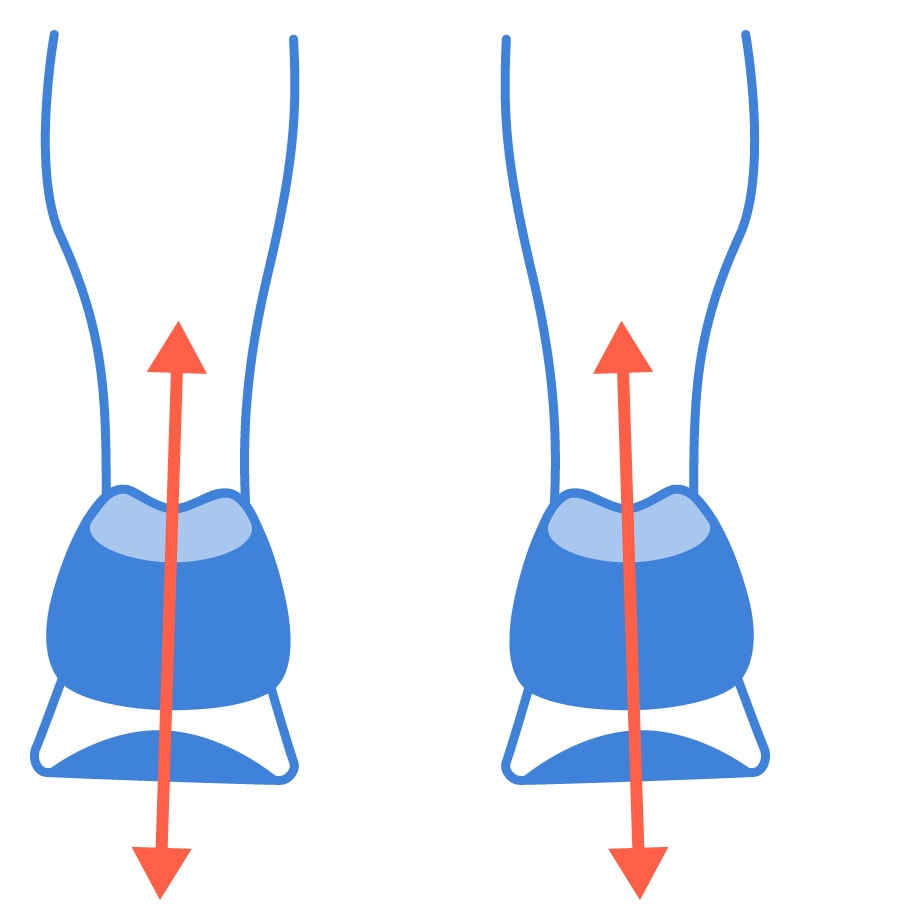
Basic Pronation
(Also called Neutral Pronation) When your foot rolls inward a typical amount. It helps you absorb impact and relieve pressure on knees and joints. It is a normal trait of neutral, biomechanically efficient runners.
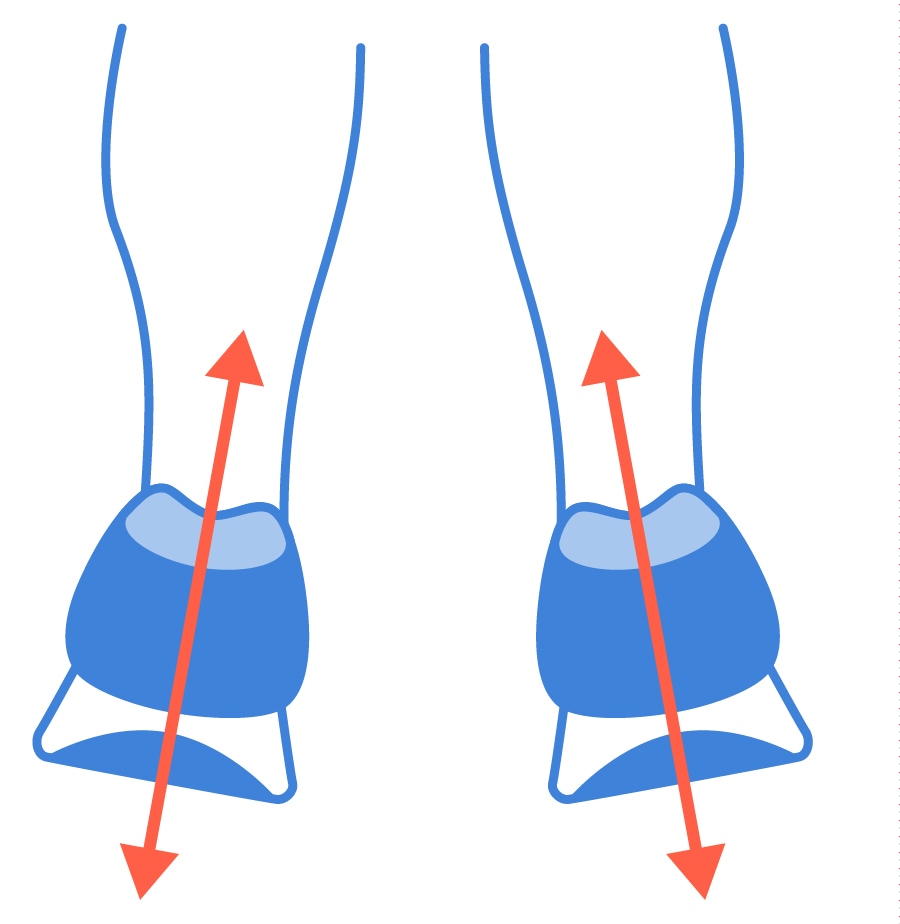
Overpronation
When your foot rolls inward excessively, leaving you at risk of injuries. Overpronators may want stability or motion control shoes. Look for patterns of wear near your big toe and the inside sole at the ball of your feet.
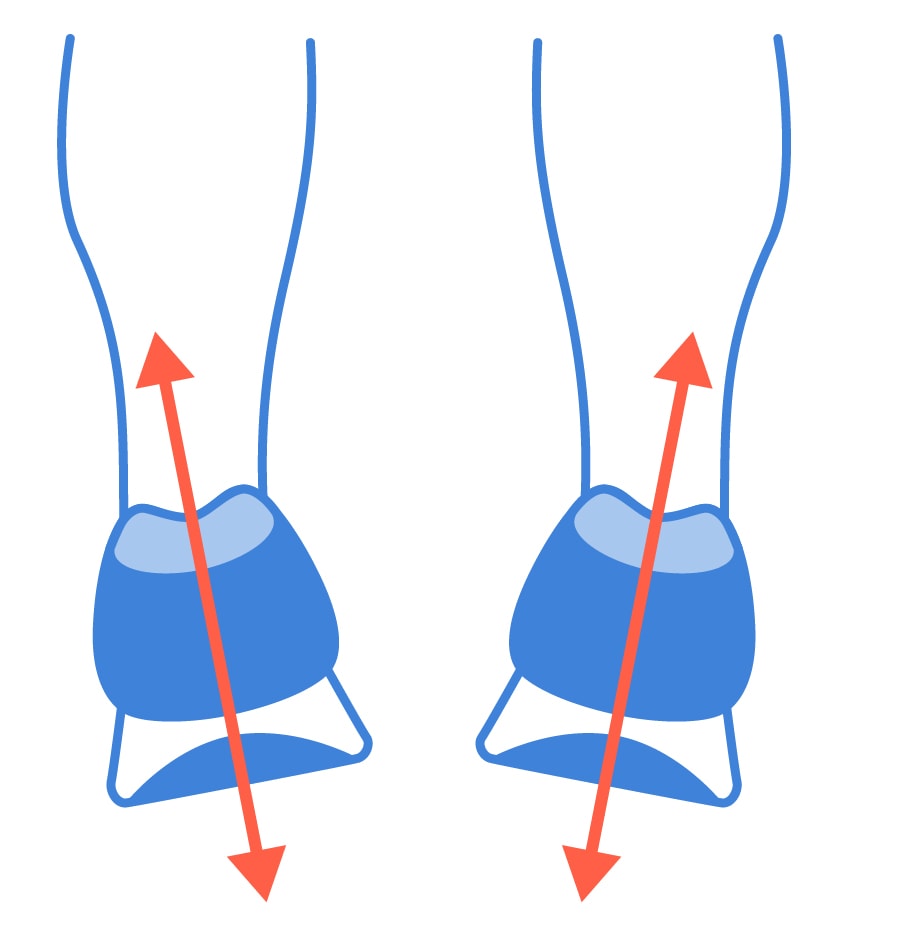
Supination
When your foot rolls outward when it hits the ground. Relatively few runners supinate, but those who do may want shoes with more cushion and flexibility. Look for signs of wear along the outside edge of your shoe.
Determining Your Pronation
One way to determine your pronation is to have a footwear specialist observe your gait when you run. Another way is to examine the wear pattern on a well-used pair of running shoes. Use this guide to figure out your pronation and the level of shoe support you might consider:
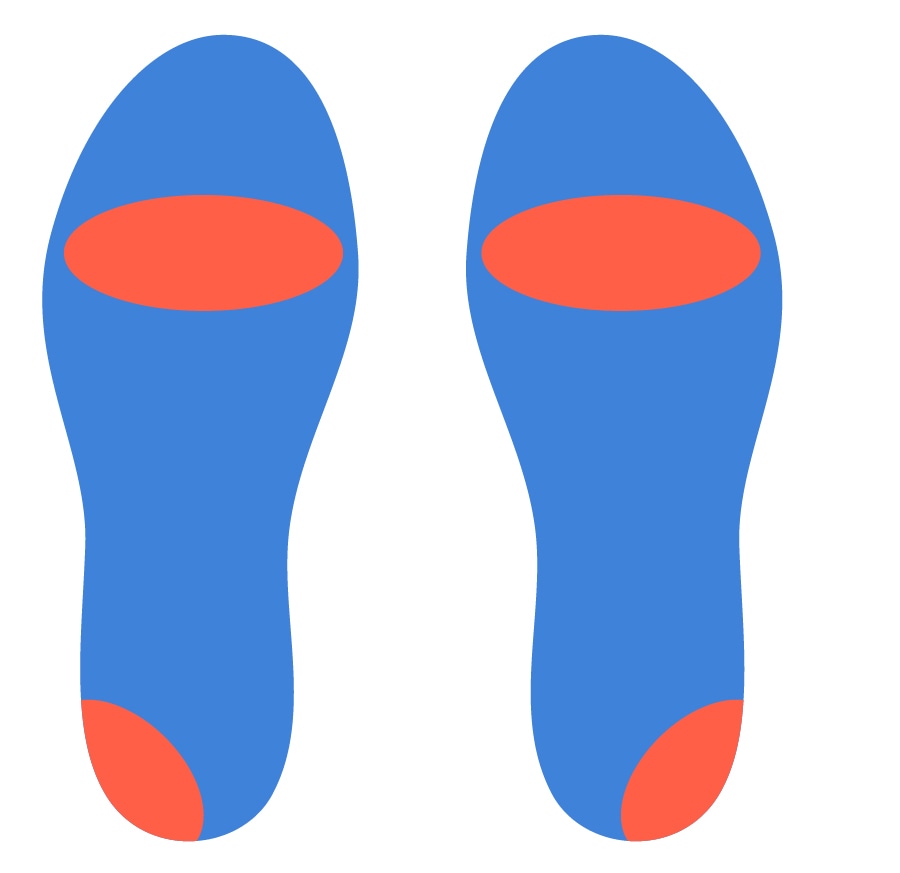
Basic Pronation
Your foot rolls inward a typical amount.
Pattern of Wear on Shoes:Centralized to the ball of your feet and portion of your heels.
Shoes to Consider:Neutral shoes or stability shoes with light structure.
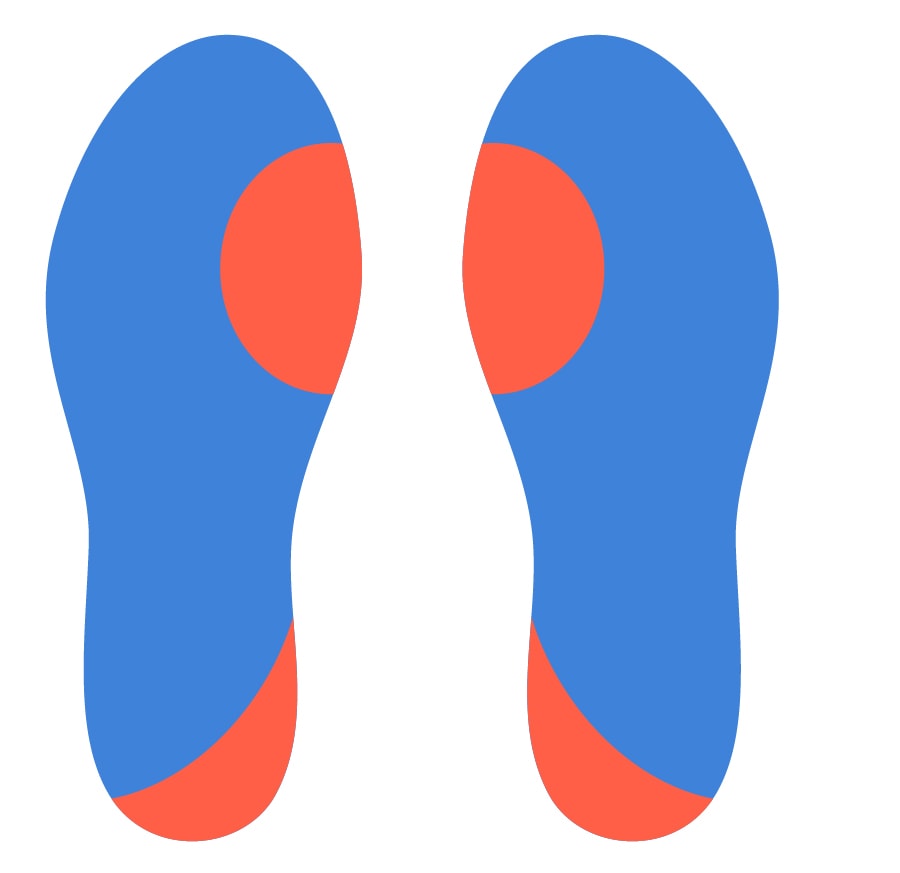
Overpronation
Your foot tends to roll in too much.
Pattern of Wear on Shoes:Concentrated along the inside edge of the shoe.
Shoes to Consider:Stability shoes with structured support. In extreme cases, motion control shoes.
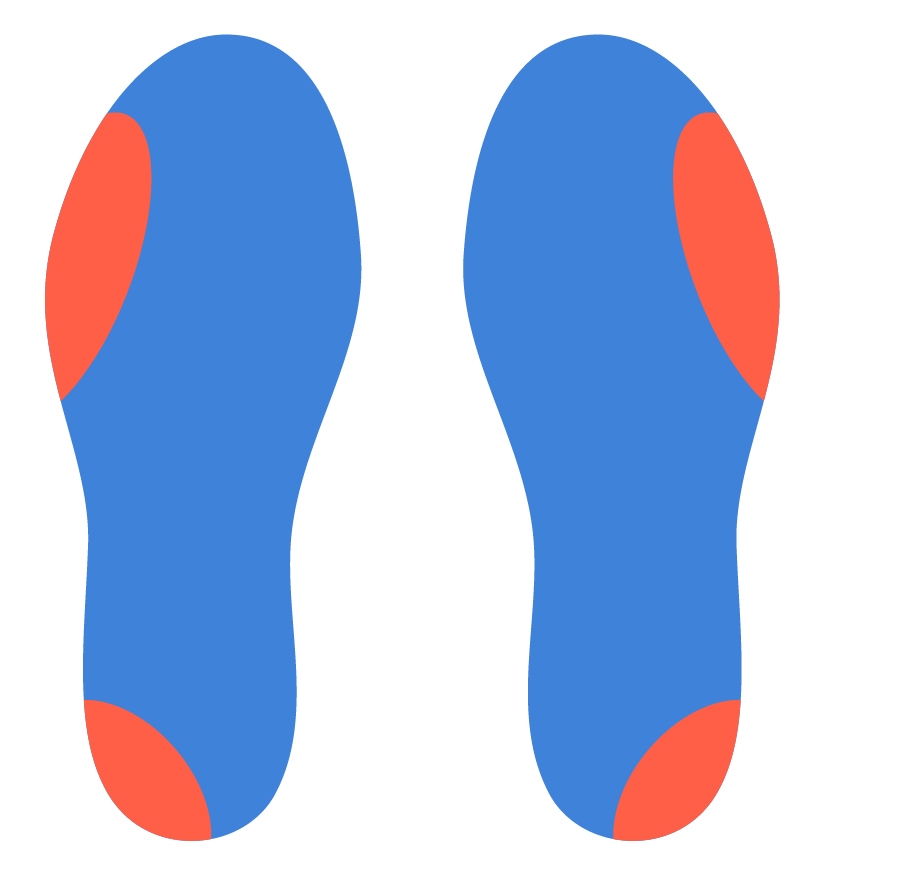
Supination
Your foot tends to roll outward excessively.
Pattern of Wear on Shoes:Concentrated along the outside edge of the shoe.
Shoes to Consider:Neutral shoes may work well.
Finding Your Level of Support
Once you've decided what kind of ride you'd like to experience from your shoes, depending on your biomechanics, you can find a level of support in your shoes to bolster your gait. There are three categories of running shoe support: neutral, stability and motion control (high support).
Neutral shoes:
- They can work for mild pronators but are best for neutral runners or people who supinate (tend to roll outward).
- They typically do not have motion control features such as "medial posts" that reinforce the arch side of each midsole.
Shop neutral running shoes on REI.com
Stability shoes:
- These shoes have stability devices that help control pronation.
- They often include guide rails which control side-to-side motion.
- Good for runners who exhibit mild to moderate overpronation.
- Shoes are not as rigid as motion control shoes.
Shop stability running shoes on REI.com
Motion control shoes:
- These are the most stable of running shoes to counter moderate or severe overpronation. (Note: These are less common and most likely to be carried in specialty running stores.)
- Best for runners who exhibit moderate to severe overpronation.
- Features include firm posts that reinforce the arch side of each midsole, stiffer heels and a design built on straighter lasts to counter overpronation.
- Special internal construction such as stiffer heel or denser foam.
Shop motion control running shoes on REI.com
Get a Good Shoe Fit
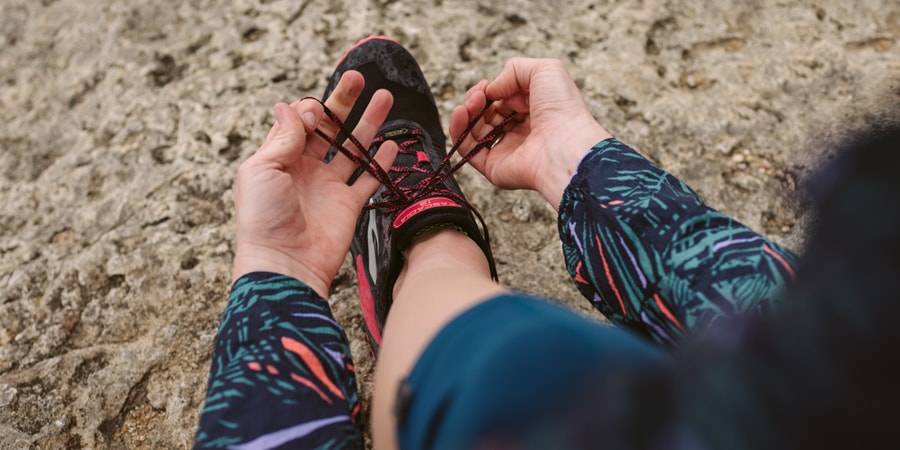
Nothing beats trying on shoes in person to get a feel for how they fit. Below are tips to get a good fit.
Further reading: How to Get a Great Fit in Running Shoes
Get both feet measured: Your foot size changes over time, so it's important to get your feet measured when trying on new running shoes.
Try on shoes at the end of the day: Your feet swell throughout the day and will be largest at the end of the day. This helps you avoid buying shoes that are too small.
Aim for a thumbnail's length of space in the toebox: You should be able to wiggle your toes. The width should be snug but allow a bit of room for your foot to move without rubbing. Laces should be snug but not tight.
Try on both shoes: Some people have one foot that is larger. Try on both the right and the left shoe and find the pair that fits your larger foot.
Bring along insoles, running socks or orthotics (if you use them): They affect the way your shoe fits.
Make sure they're comfortable from the get-go. You don't need to break in running shoes.
Consider aftermarket insoles (aka footbeds). Insoles come in models that can enhance comfort, support or fit—or all three.
Further reading: How to Choose Insoles
Be aware of brand fits. Each brand has its own proprietary foot model, or "last," so you'll have better fit success if your foot is close to a particular brand's last. This is something that a footwear specialist will know, though, which is why an in-store fit session is key.
Lace your shoes correctly: Certain lacing techniques can improve the fit of your shoes. The runner's loop, for example, can help lock your heel in place. Window lacing (box lacing) can help relieve pressure points on the top of your foot.
Further reading: How to Lace Running Shoes
Video: How to Size and Fit Running Shoes
Running Shoe Length and Width Size Charts
Measure the length and width of your feet using the tips in the video above, then consult with these size charts to find your perfect fit.
Women's Running Shoe Length Size Chart
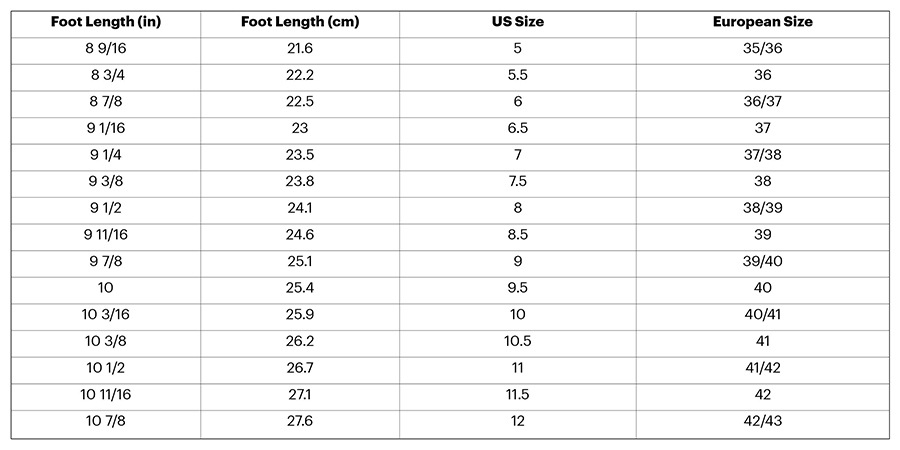
Men's Running Shoe Length Size Chart
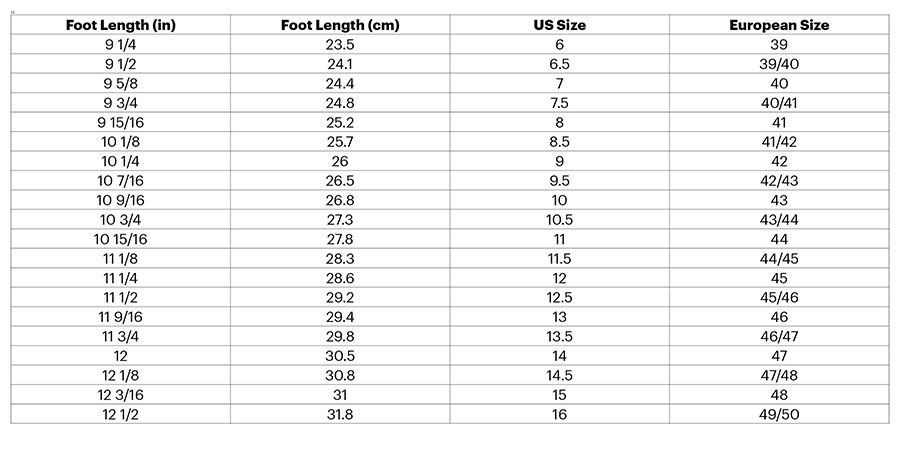
Women's Running Shoe Width Size Chart
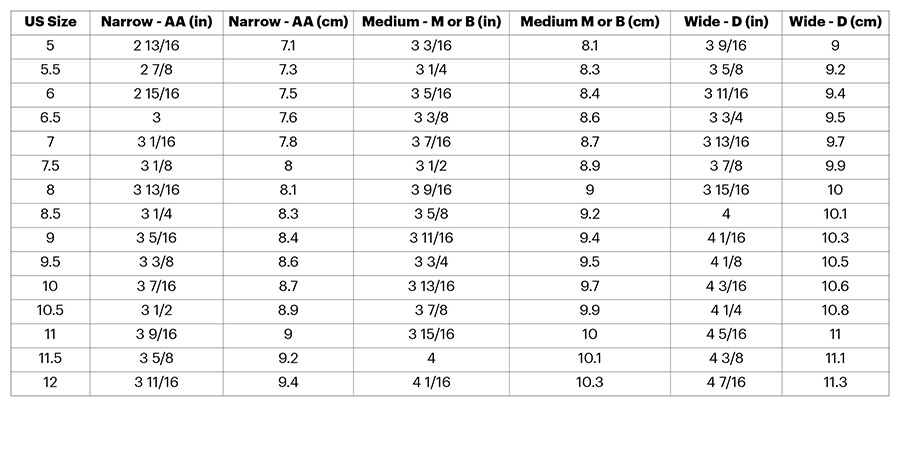
Men's Running Shoe Width Size Chart
